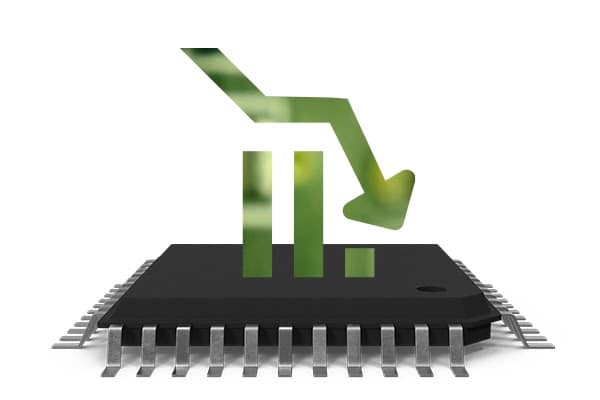
A delicious snack of chips and dips is enjoyed by nearly everyone. There isn’t a more popular or American snack than this classic combination. Chips and dips, on the other hand, are proving to be a pain in terms of technology, supply chains, and our capacity to obtain the things we require.
Many essential products were in short supply at the start of the COVID-19 epidemic. Toilet paper, hand sanitizer, cleaning supplies, and other necessities were in high demand, and manufacturers couldn’t keep up. As a result, certain things were more difficult to obtain, and prices soared as a result.
As the world returns to normal, numerous items are once again widely available. However, there is still a supply shortage. This includes a microprocessor shortage, which is wreaking havoc on the car industry.
Learn more about chips, dips, and the bullwhip effect to assist drivers in the Flint, Clarkston, and Grand Blanc, Michigan areas.
THE SHORTAGE OF MICROCHIPS IN THE WORLD

Did you know that the average new car contains 12 microchips that power the vehicle’s “brain”? Also, did you know that there is a global shortage of microchips right now? The COVID-19 epidemic sparked a worldwide rise in electronic demand. Business people started working from home, students switched to online learning, and the general population stayed at home to prevent the virus from spreading. As a result, sales of personal computers, tablets, television sets, and game consoles skyrocketed. The demand for the microchips that drive these gadgets outstripped supply. Manufacturers couldn’t keep up because they couldn’t build microchips quickly enough.
INVENTORY LEVELS HAVE DECLINED DUE TO A LACK OF CHIPS.

The effects of these abrupt societal changes, combined with international trade policies and the outsourcing of microchip manufacture, have resulted in a scarcity – or, to put it another way, a dip – of microchips available for electronics and other commodities. We’ve all heard, if not personally experienced, how difficult it is to purchase high-demand devices such as the Playstation 5, which is owing to a paucity of essential production ingredients to meet consumer demand. The lack of microchips has spilled over into the automobile industry, resulting in a major drop in vehicle manufacturing. Many factories have been put on hold because there aren’t enough microchips to finish building inventory. Economists predict that inventory declines will last until 2022.
THE SUPPLY CHAIN PHENOMENON CALLED THE BULLWHIP EFFECT

The bullwhip effect is a supply chain phenomena that describes how demand changes at the retail level can influence demand at the wholesale, distributor, manufacturer, and raw material supplier levels. Because of the mechanics involved in cracking a whip, the bullwhip effect was named after it. When a person snaps their wrist to crack a whip, the tiny movement produces wave patterns to grow in a chain reaction as they proceed down the whip.
Remember the months of March and April in 2020? Consumers panicked and went to supermarkets, depleting supplies of toilet paper, cleaning supplies, hand sanitizers, and other items in the Grand Blanc Area. The scarcity of supply produced a temporary increase in the price of these items.
Due to the nature of how the epidemic unfolded, the 2020 pandemic had a bullwhip effect on car interest. Many people suddenly found themselves driving barely a fraction of the distance they had driven prior to the outbreak. People stayed at home more, went out less, and travel came to a halt. Automobile manufacturers reduced inventory supply to match demand as fewer people purchased vehicles. They offered never-before-seen sales incentives, such as extremely cheap financing rates, to entice would-be purchasers to make a purchase. Automakers reacted as a result of the distressed inventory created before to the shutdown. However, as time passed and people returned to their normal habits before COVID-19, demand for vehicles began to rise.
As immunizations become more widely available, Americans are returning to work and society is reopening. Many individuals are ready to get out and resume their lives as usual. Vehicle demand is recovering to levels seen prior to the epidemic, but supply has yet to catch up. When you combine that with the reduction in semiconductor prices and automakers needing to shut down owing to a lack of supplies to roll inventory off the assembly line, you have a bullwhip effect on your hands.
HOW DOES THIS AFFECT YOU?
Simply said, if you’ve been considering purchasing a vehicle, now is the time to do so. We’ve all seen what’s happened in Michigan’s real estate market, let alone across the country. The demand for houses has considerably surpassed the supply, resulting in bidding wars, inflated home prices, and increased the difficulty of purchasing a home. In the car industry, the same thing is happening. As inventory becomes more tight, the number of vehicles available will be limited. Finding the vehicle you want will be more difficult, and the historically low APRs and incentives will likely start to fade.
The good news is that we haven’t yet arrived at this point. It’s possible, however, that this is where we’ll end up. If you’re in the market for a new vehicle, we recommend that you act quickly. The availability of the vehicle you desire with low APR offers is currently available, but it is unlikely to improve or reproduce itself in the near future.
Don’t allow the Bullwhip’s Chips, Dips, and Effect complicate your shopping experience.
Contact us immediately and we’ll do everything we can to help you get into your next BMW, even if that means ordering one for you.




